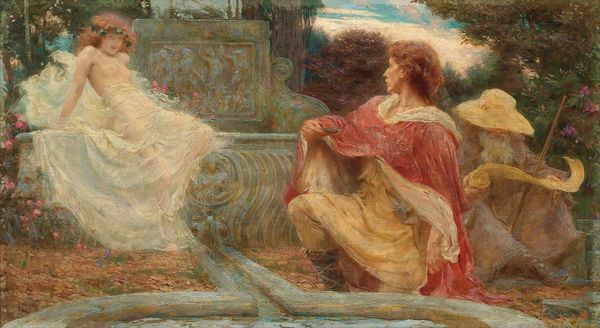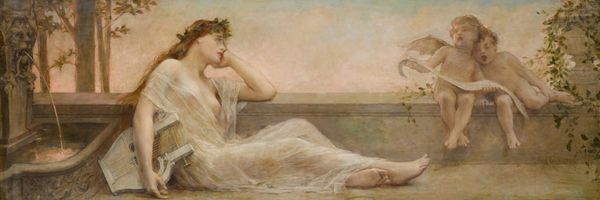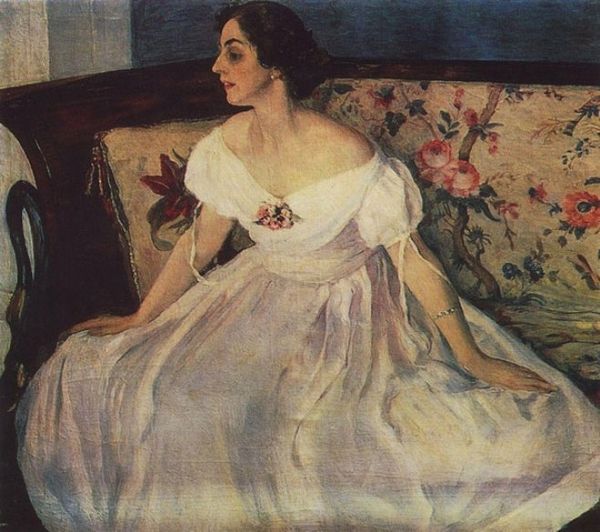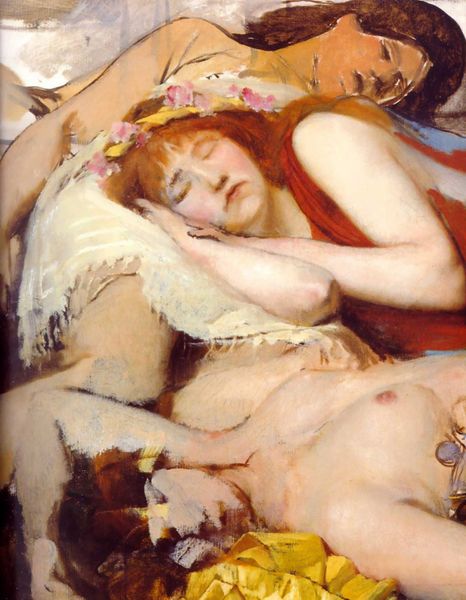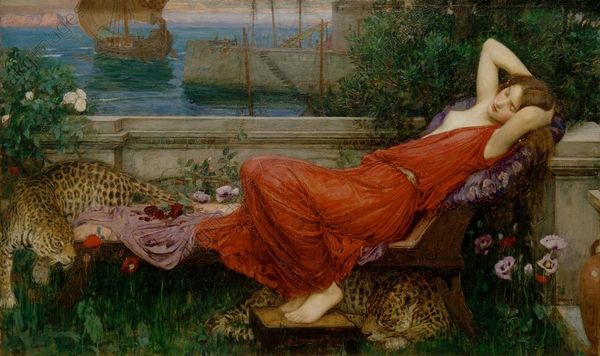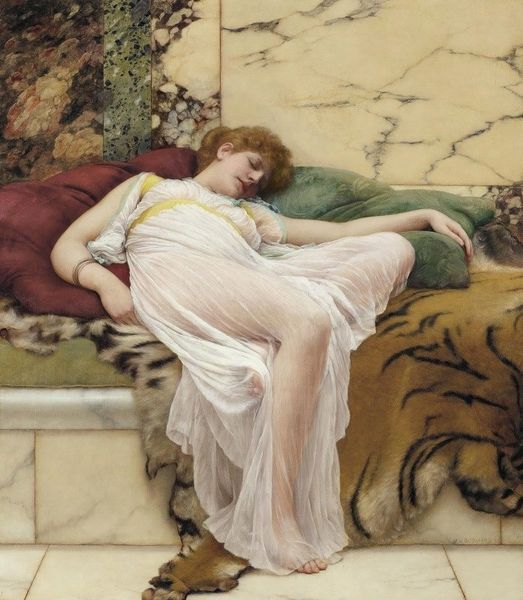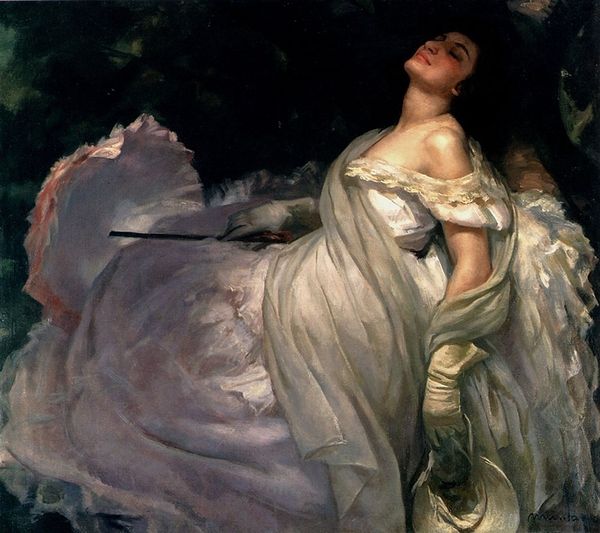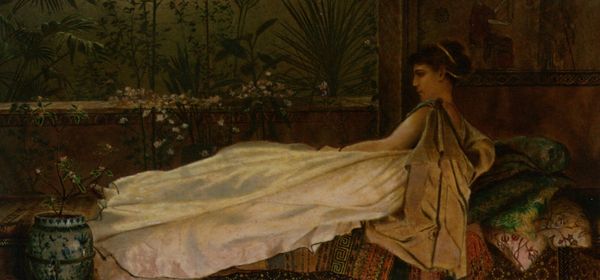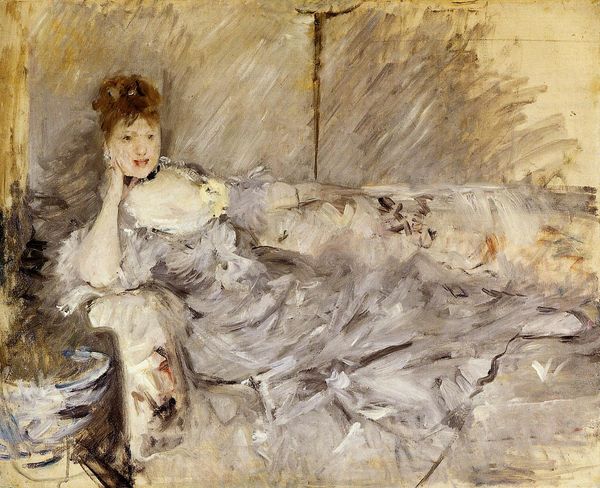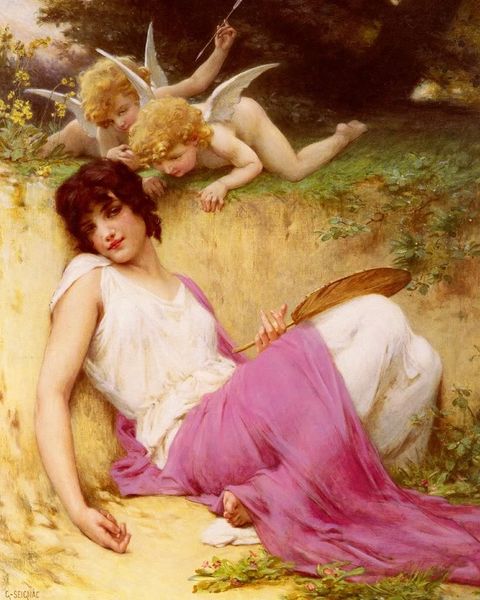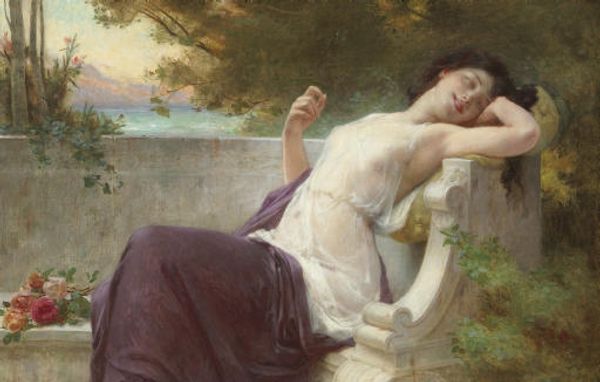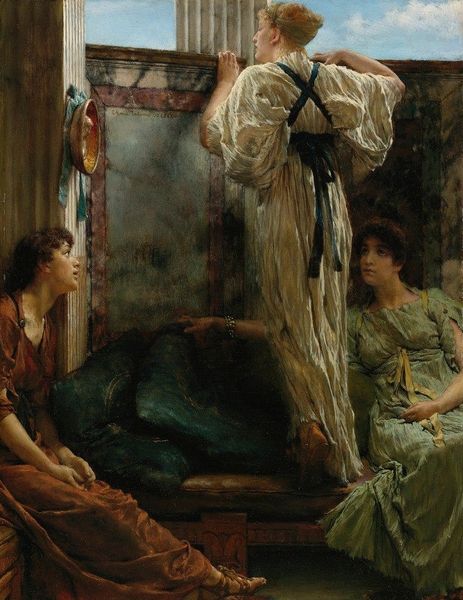
Symphony in White, No. 3 1867
0:00
0:00
jamesabbottmcneillwhistler
Barber Institute of Fine Arts, Birmingham, UK
#
gouache
#
abstract painting
#
possibly oil pastel
#
oil painting
#
neo expressionist
#
acrylic on canvas
#
underpainting
#
painting painterly
#
painting art
#
watercolor
Dimensions: 52 x 76.5 cm
Copyright: Public domain
Curator: We are looking at James Abbott McNeill Whistler’s “Symphony in White, No. 3” from 1867, currently housed at the Barber Institute of Fine Arts. Editor: It evokes a peculiar feeling. There is an almost suffocating stillness, yet also this compelling warmth in the subdued color palette. It seems caught between a dream and stark reality. Curator: Interesting. I think we should consider the socio-economic context here. Whistler challenged the conventions of academic painting, moving towards "art for art's sake." Consider also the Pre-Raphaelite movement; these artistic influences embraced a shift from narrative and historical subjects to a focus on materials and aesthetic qualities, and impacted consumer tastes, as did the rise of aestheticism with its embrace of beautiful, even useless things. Editor: Yes, and what strikes me immediately is the symbolism imbued within the subtle whiteness. The color evokes innocence and purity, ideas firmly ingrained in Victorian society. But the reclining woman's languid pose and detached gaze – there’s a tension between the projected ideal and perhaps something more subversive simmering underneath. Note the fan on the lower left corner -- there could be further meaning there. Curator: Precisely. It would be productive to investigate the materials as indicators of this shifting market; consider also Whistler’s method in terms of layering the paint -- he built up this ethereal vision of color with many delicate layers and this painstaking construction seems to mirror the complex and carefully crafted facades that are central to the themes the artist seeks to interrogate in this work. Editor: Absolutely. Those white dresses, while seemingly uniform, hint at the varying roles women played in Victorian society. It is like he's freezing a moment and capturing so much in between. Curator: And it’s a fascinating artifact from an era grappling with evolving aesthetic values, emerging capitalist consumption practices, and changing ideals for women, so many of which were intertwined. Editor: I see this painting now as less a celebration of beauty than a profound commentary on the visual language of the era and its veiled societal expectations. Curator: Indeed, by exploring both the materiality and symbolic language, the painting delivers a window into a complex cultural landscape.
Comments
No comments
Be the first to comment and join the conversation on the ultimate creative platform.
